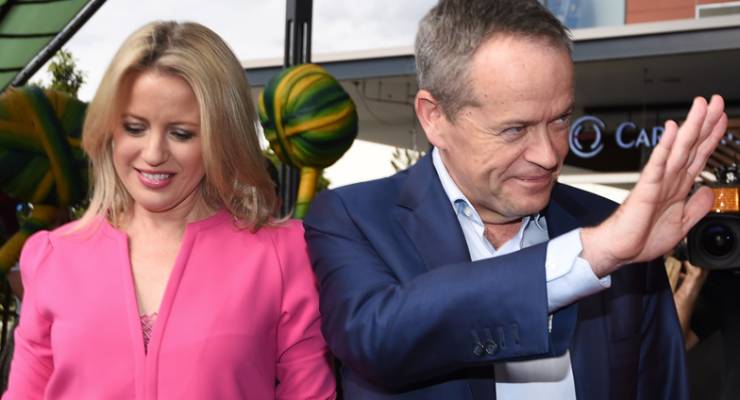
Bill Shorten’s flying circus has found itself in the familiar surroundings of Queensland over the past few days, dividing the first three days of the week between visits to Cairns and Brisbane.
Nor was this the first time the state had been deemed worthy of an extended dose of the Opposition Leader’s attention.
The first week of the campaign was devoted to a road trip down the length of the state’s coast, interrupted only by a fly-out to Sydney on the Thursday.
One possibility is that the Melbourne-based Opposition Leader has developed a liking for the Sunshine State’s temperate winter weather, notwithstanding its alien and confusing cultural practices.
Alternatively, Shorten’s movements may reflect a calculation that Labor can still chart a narrow course for victory through the state’s abundance of marginal seats.
Of particular note is that only two of Shorten’s eight days in the state have been spent in Brisbane.
For a party that likes to think it was founded under a gum tree in Barcaldine, Labor has had dismally little to show for itself in regional Queensland at federal level in recent times, having never fully recovered from the wipe out it suffered when the Keating government was defeated in 1996.
Even when Kevin Rudd rode to victory on the back of nine seats gained in his home state in 2007, Labor was unable to haul in Townsville-based Herbert, which it had held throughout the 13 years of the Hawke-Keating government, or Bundaberg-based Hinkler, which it held from 1987 to 1993.
Labor has reason to hope things might be different this time, for many of the same reasons that apply in its other bright spot of Western Australia.
The resources boom of the previous decade was a major bonanza for central Queensland in particular, to the extent that the Flynn, Capricornia and Dawson electorates ranked in the top third for median income at the time of the 2011 census — the only non-capital city seats to do so, apart from Durack in Western Australia.
The worst of the subsequent hangover has hit on Tony Abbott’s and Malcolm Turnbull’s watch, in which time the unemployment rate in regional Queensland has gone from around 6% to 8%, while holding firm at around 6% both in Brisbane and nationally.
Townsville has been hit particularly hard, with unemployment rising from 4.8% in 2012-13 to 11.7% in April — the collapse of Clive Palmer’s Queensland Nickel having been a substantial contributor.
Then there is a tendency for regional voters to respond less favourably than their metropolitan counterparts to Malcolm Turnbull’s image of polished modernity, with opinion polls consistently placing the Prime Minister’s net approval around 5% lower outside the capital cities, in a reversal of the position under Tony Abbott.
For such reasons does Labor hope that voters who have come to feel culturally alienated from the party might yet be persuaded that Shorten is better attuned to their most pressing concerns than the former partner and Australian managing director at Goldman Sachs.
If the objective for Labor is clear enough, it’s still evident that they are fighting on uphill terrain.
Poll trend analysis points to a swing to Labor in Queensland approaching 4% — not bad, but only enough to give them real cause for confidence in low-hanging Capricornia, with its LNP margin of 0.8%.
If the swing is indeed coming in above the statewide average in the regions, it follows that it’s falling below in the south-east, which suggests Labor will have a very hard time in crucial marginal seats such as Brisbane and Bonner.
Coalition sources cited in the Fairfax papers on the weekend were dismissive of Labor’s optimism, and the Prime Minister’s campaign movements suggest this wasn’t just talk.
Turnbull certainly hasn’t been ignoring the state, having chalked up his sixth campaign day there yesterday before flying on to Sydney for the rugby league State of Origin.
However, only two of those six days were spent in the regions, with Cairns and Townsville visited on May 18, and last Thursday spent in Rockhampton to aid Michelle Landry in her tough task of retaining Capricornia, the Liberal National Party’s high-water mark gain of the 2013 election.
It would seem then that the Coalition is confident enough about its prospects, as it is by all accounts with respect to the election as a whole.
But as Campbell Newman could very easily remind them, it never pays to get too cocky wherever the voters of Queensland are concerned.








After both the federal and state coalition blatantly lied during the Newman and Abbott campaigns, it is a bit optimistic to think that Queenslanders do not learn from experience.